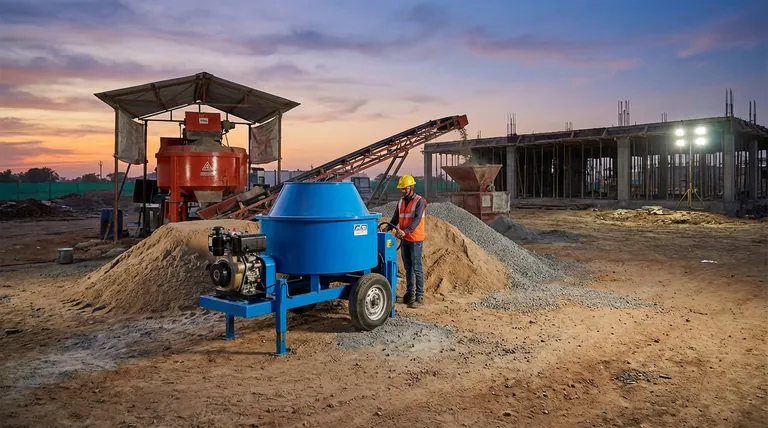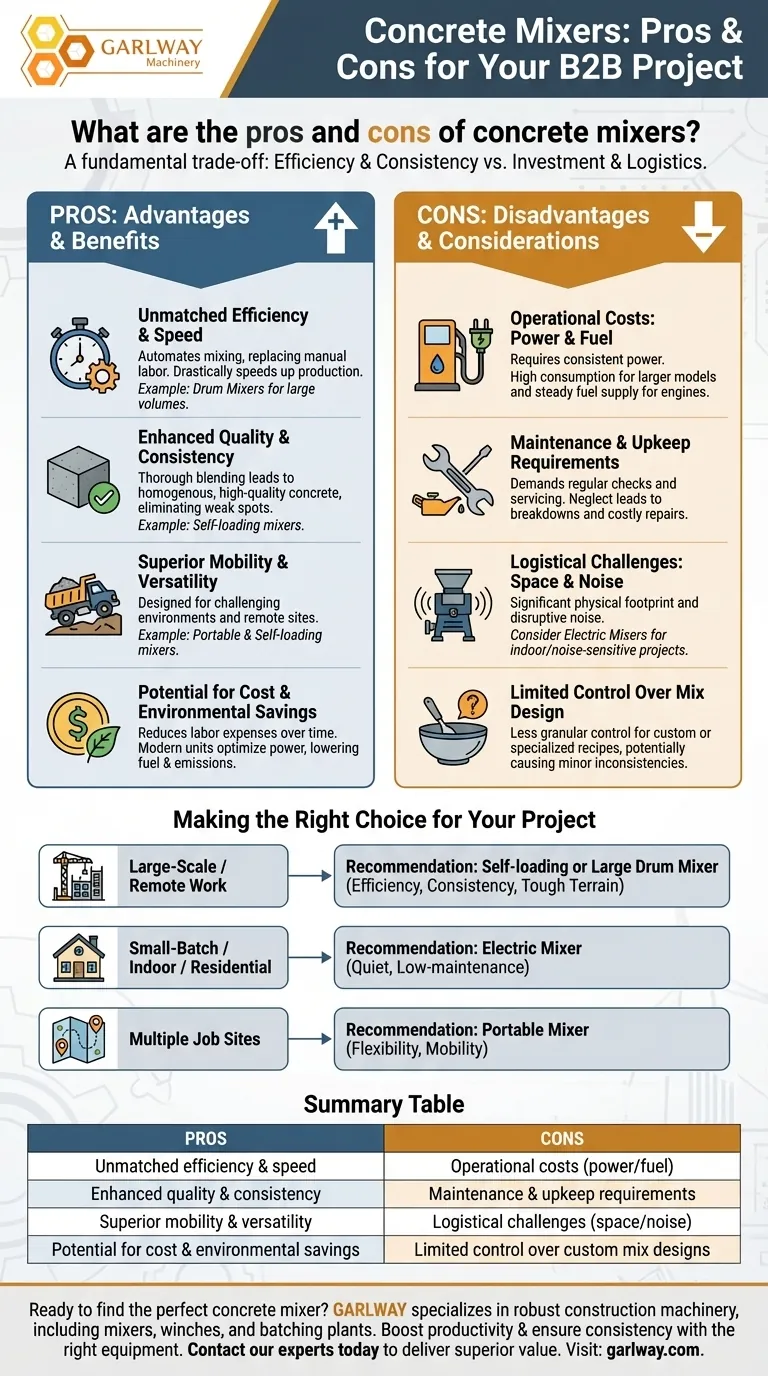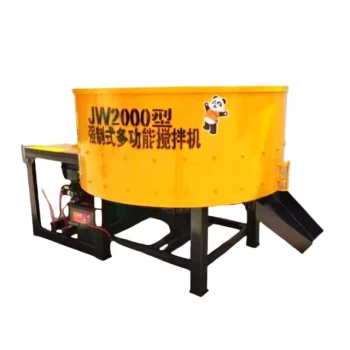The primary benefit of a concrete mixer is a dramatic increase in efficiency and mix consistency, but this comes at the cost of initial investment, ongoing maintenance, and logistical requirements like power and space. These machines are designed to save significant labor and time, producing a uniform concrete batch that is difficult to achieve by hand.
Deciding whether to use a concrete mixer is a fundamental trade-off. You are exchanging the physical labor and potential inconsistency of manual mixing for the financial and operational costs of specialized machinery.

The Primary Advantages of Using a Concrete Mixer
The benefits of a concrete mixer are most apparent when a project demands speed, consistency, and the ability to work in challenging environments.
Unmatched Efficiency and Speed
A mixer automates the physically demanding process of combining cement, aggregate, and water. This eliminates the need for manual labor with shovels and wheelbarrows, dramatically speeding up production.
Drum mixers, for example, are exceptionally efficient at preparing large volumes of concrete quickly, making them indispensable for substantial projects.
Enhanced Concrete Quality and Consistency
Hand-mixing often results in uneven distribution of materials, leading to weak spots and a lack of uniformity in the final product.
Self-loading mixers and other automated systems ensure all components are thoroughly blended, resulting in a homogenous, high-quality concrete that improves performance and durability.
Superior Mobility and Versatility
Many mixers are designed for use far from established infrastructure.
Portable mixers can be easily transported between different job sites, while self-loading mixers are built to navigate rough or remote terrains, bringing concrete production directly to where it's needed.
Potential for Cost and Environmental Savings
While there is an upfront cost, mixers can reduce expenses over time by minimizing labor requirements.
Furthermore, modern mixers often optimize engine and hydraulic power to lower fuel consumption and emissions, offering a more sustainable solution that reduces both operational costs and environmental impact.
The Practical Disadvantages and Considerations
The advantages of a mixer are balanced by practical requirements that must be managed for successful operation.
Operational Costs: Power and Fuel
Concrete mixers are not self-sufficient; they require a consistent power source.
Larger models can have significant power consumption, while engine-powered units require a steady supply of fuel. This dependency must be planned for on any job site.
Maintenance and Upkeep Requirements
Like any piece of heavy machinery, a mixer demands regular maintenance to function reliably.
Failure to perform routine checks and servicing can lead to breakdowns, project delays, and costly repairs, negating the machine's efficiency benefits.
Logistical Challenges: Space and Noise
Mixers are often large, heavy, and loud, creating logistical hurdles.
They occupy a significant physical footprint on a work site and generate noise that can be disruptive. For indoor or noise-sensitive projects, smaller and quieter electric mixers are often the only viable option.
Limited Control Over Mix Design
While excellent for standard batches, some automated mixers can limit your flexibility.
They may offer less granular control over the mix ratios, which can be a disadvantage for custom or highly specialized concrete designs that require precise adjustments. This can sometimes lead to minor batch-to-batch inconsistencies.
Making the Right Choice for Your Project
Selecting the right approach depends entirely on the scale, location, and specific requirements of your work.
- If your primary focus is large-scale production or remote work: A self-loading or large drum mixer is invaluable for its efficiency, consistency, and ability to handle difficult terrain.
- If your primary focus is small-batch, indoor, or residential projects: A clean, quiet, and low-maintenance electric mixer is the most practical and effective solution.
- If your primary focus is moving between multiple job sites: A portable mixer offers the flexibility and mobility needed to operate efficiently across different locations.
Ultimately, a concrete mixer is a tool that trades capital and operational planning for superior speed and quality in your finished product.
Summary Table:
| Pros | Cons |
|---|---|
| Unmatched efficiency and speed | Operational costs (power/fuel) |
| Enhanced concrete quality and consistency | Maintenance and upkeep requirements |
| Superior mobility and versatility | Logistical challenges (space/noise) |
| Potential for cost and environmental savings | Limited control over custom mix designs |
Ready to find the perfect concrete mixer for your project?
GARLWAY specializes in providing robust construction machinery, including a full range of concrete mixers, winches, and batching plants tailored for construction companies and contractors globally. We help you boost productivity, ensure mix consistency, and navigate project logistics with the right equipment.
Contact our experts today to discuss your specific needs and discover how our solutions can deliver superior value and performance for your business.
Visual Guide

Related Products
- Ready Mixer Machine for Construction Ready Mix Machinery
- Commercial Construction Mixer Machine for Soil Cement Mixing Concrete
- Auto Concrete Cement Mixer Machine New
- HZS90 Large Multiquip Concrete Mixers for Construction
- JDC350 Small Cement Concrete Mortar Mixer
People Also Ask
- Which type of projects require a concrete mixer? Essential Guide for Construction Pros
- What should be considered regarding the output of a concrete mixer? Match Capacity to Your Project Scale
- Can a concrete mixer be used for mortar? Understanding the trade-offs for your project
- What was significant about Roscoe Lee's 1934 concrete mixer design? Pioneering Modular Construction Equipment
- What is the average lifespan of a concrete mixer? Maximize Your Equipment's Lifespan & ROI



















